Millions of Poles have fled to the West over the decades of the People's Republic of Poland. Daredevils crossed the border despite the constant vigilance of the authorities. And they proved that human ingenuity knows no bounds. What were their methods tried?
A few years after World War II, the communist authorities of the People's Republic of Poland clearly tightened the passport regulations. In this way, the mobility of Poles was significantly limited. This is what Jarosław Molenda writes about the situation that has arisen in his book "Zwać at all costs. Famous refugees and emigrants from the PRL ”:
Departure or arrival to Polish was possible only for some groups people privileged or those who z many others reasons were essential to errands important for functioning countries matters.
Despite the sealing of borders and the authorities' care that no unauthorized person would get out of the country, the Poles fled to power. According to historian Dariusz Stola, who studies migration movements, between 1949 and 1989 permanently left Poland over two million people. And that's not all. M millions of others have joined legal and illegal temporary migrations, working or trading - adds the Warsaw researcher.
The fugitives' creativity and determination was endless. Many of them acted in a very unconventional manner. But what exactly had to be done to get through the increasingly well-guarded borders of the People's Republic of Poland?
1. Become a pilot
The available escape strategies depended largely on ... career choice. For example, having aviation qualifications opened many ways. Especially if you had access to the appropriate hardware.

Franciszek Jarecki (source:public domain) and MiG5-bis. It was with this plane that the Polish pilot escaped to the West (photo:Kirill Pisman; license CC BY-SA 2.0).
The opportunities related to the profession of a pilot were perfectly used by, for example, second lieutenant Franciszek Jarecki, a graduate of pilot schools in Dęblin and Radom. He served in the 28th Fighter Aviation Regiment. He thought about escaping for a long time - more or less from the moment he was transferred to the base in Redzikowo near Słupsk. He carried out his plan on March 5, 1953, exactly on the day of Stalin's death.
The pilots were flying together. Jarecki operated a real miracle of Soviet technology, which was the MiG-15bis at the time. The weather was favorable to him. He took advantage of the cloud cover and broke away from the group. He headed towards the Danish island of Bornholm.
Unfortunately, the aviator's absence was quickly noticed. After a while, 8 Soviet MiGs chased him. Sitting in the cabin, I reloaded my pistol - he recalled many years later in Radio Free Europe. I looked at the barrel and watch and realized I could use this gun against myself in a few minutes .
The last resort did not come. Jarecki did not get caught and landed safely. To reach his destination, however, he had to work real miracles in the air. So maybe instead of "become a pilot" our advice should be "become an EXCELLENT pilot"?
2. Become a constructor
Those who dream of escaping by air, but do not like the career of a military pilot, may follow in the footsteps of the amateur designer, Eugeniusz Pieniazek. His work, the famous Kukułka, was the first amateur plane officially registered in the Polish People's Republic. The creator's great determination is evidenced by the fact that the first frameworks of the structure were created ... in his apartment in a block of flats . Only later did he transfer the work to the flying club hangar.
On September 13, 1971, Pieniazek planned a flight from Bielsko-Biała to Krosno. But on his return he headed south. After a three-hour flight over Czechoslovakia and Hungary, due to extremely unfavorable weather conditions and low oil pressure, it landed in the Yugoslav Subotica.
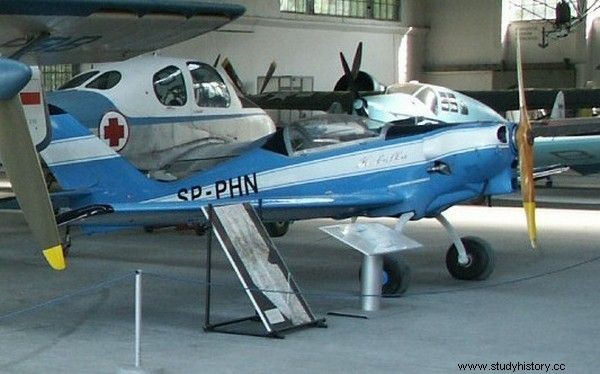
It was with this plane of his own design that Eugeniusz Pieniążek escaped from People's Poland (photo:Michał Derela; license CC BY-SA 3.0).
Yugoslavia was not an ideal escape destination. Pieniazek was imprisoned there for several months. But as soon as he was released, he got to Sweden via Austria.
3. To become a… terrorist
This is only for those who are really determined. Because why learn the art of flying if you can just force the crew to change direction? About the fact that to escape could only be a domestic flight ticket and something sharp in the wallet , testifies to the history of twelve young men from Katowice and Tychy.
Young desperate people set out on their journey on September 18, 1981. Thanks to just a few razor blades, they managed to terrorize the entire crew of the plane flying from Katowice to Warsaw. And they achieved their goal. The machine landed at Berlin Tempelhof airport instead of in Warsaw. But the kidnappers' bravado only half-paid off. After reaching the Federal Republic of Germany, they went straight to prison.
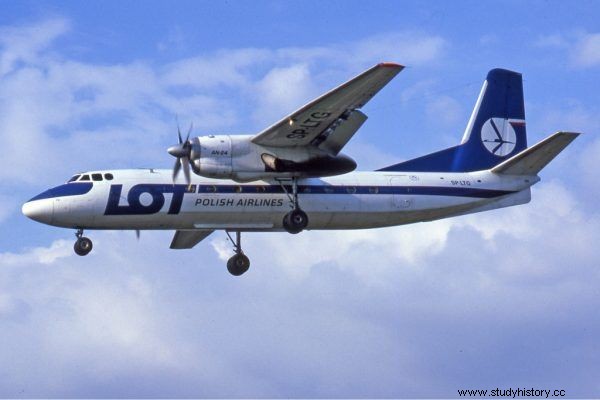
In the 1970s and 1980s, Tempelhof airport became a frequent destination for planes hijacked by Poles. The photo shows the landing of Antonov An-24 belonging to LOT, on April 30, 1982 (photo:Ralf Manteufel; license GFDL 1.2).
Despite the enormous risk, cases similar to that in 1981 happened frequently. In the seventies and eighties, Poland became a world leader in hijacking aircraft. And the escapes to Tempelhof were so frequent that the name of the Polish airline was deciphered as Landing On Tempelhof.
4. To become a sailor
As much as the skies, the imagination of those wearing an escape plan was influenced by the Baltic Sea. There were often attempts to get out of Poland on board fishing boats and even yachts.
The people's authorities were aware of the leakage of the blue border. Wojciech Jacobson, a sailor from Szczecin, emphasizes that in the People's Republic of Poland there were always problems with sailing out to sea. The worst was in the 1950s. The difficulties awaiting the sea wolves are reported in the book “Escape at any cost. Famous refugees and emigrants from the People's Republic of Poland ”Jarosław Molenda:
Even a cruise from Lake Dąbie near Szczecin to Trzebież on the Zalew Szczeciński (both waters are connected) required border checks. Every nook and cranny of the yacht was searched, the soldiers even looked into the drawers to see if there was a fugitive there. Cruises on the Lagoon were limited by the principle "from sunrise to sunset".
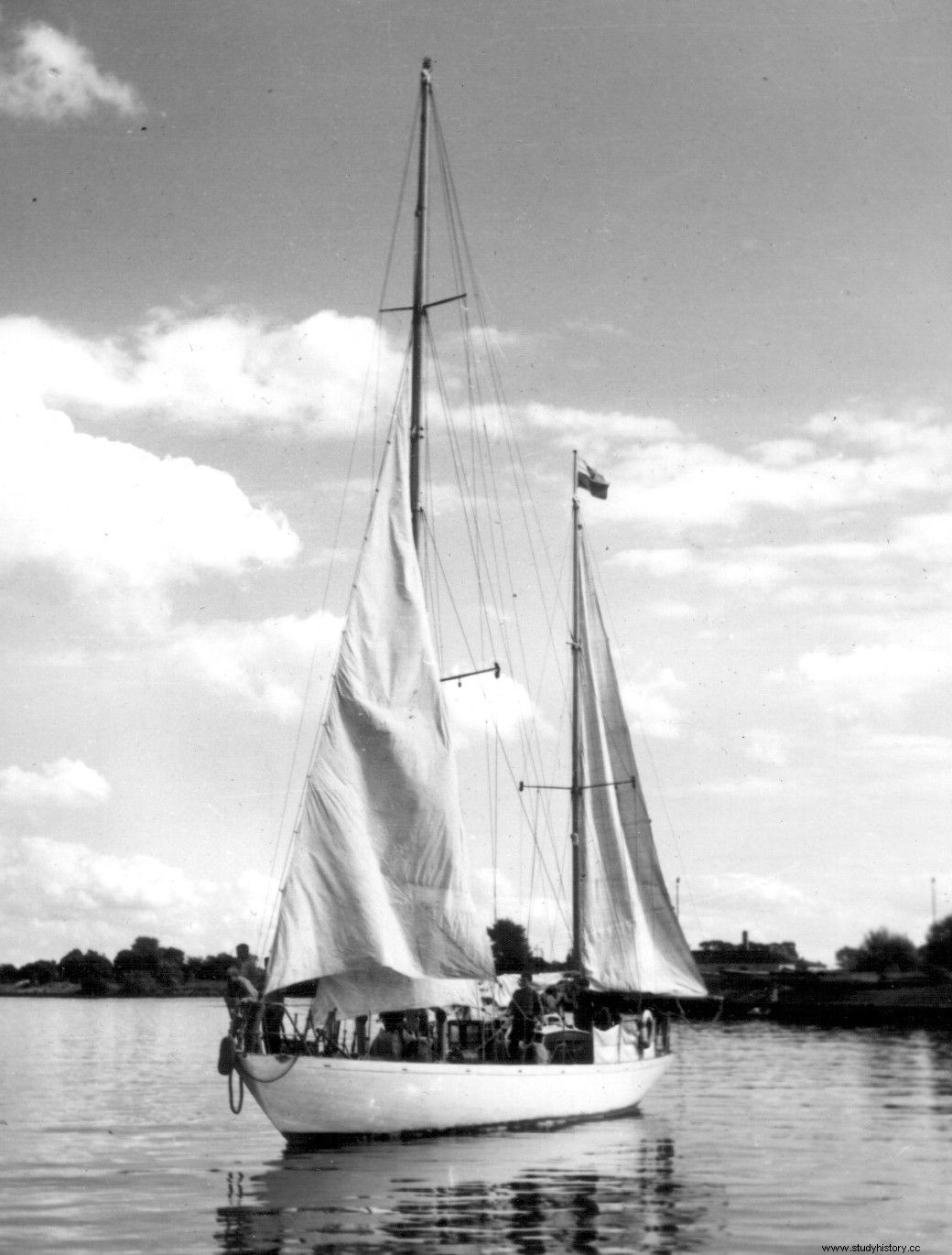
In the times of the People's Republic of Poland, it was particularly carefully checked whether any potential refugees from the socialist paradise were hiding on board yachts and sailing boats. Picture from the book “To Escape at All Costs. Famous refugees and emigrants from the Polish People's Republic ”(Bellona 2017).
In order to dare to escape despite such restrictions, it took considerable courage, and even boldness bordering on insolence. However, there was no shortage of daredevils. The sailors of ORP Żuraw made an attempt to escape bordering on the impossibility.
On August 1, 1951, sixteen crew members stole weapons from storage. With her help, they intimidated and imprisoned the officers. When the ship reached Ystad, Sweden the next day, twelve of the sixteen rebels chose to be free. While escaping, they sentenced the rest of their colleagues and a group of officers at the same time. Humiliating interrogations and unenviable lives awaited them in their homeland.
5. To be an exceptionally brave child
Sometimes it was only a child's fantasy to escape. This was the case with the young Zieliński brothers from Żyraków in Poddębice. Fifteen-year-old Adam and 12-year-old Krzysztof started their adventure with forging their mother's signature. Thanks to this, they could take the money deposited in the School Savings Bank. And then, without unnecessary preparation, they just snuck out of the family home at night.
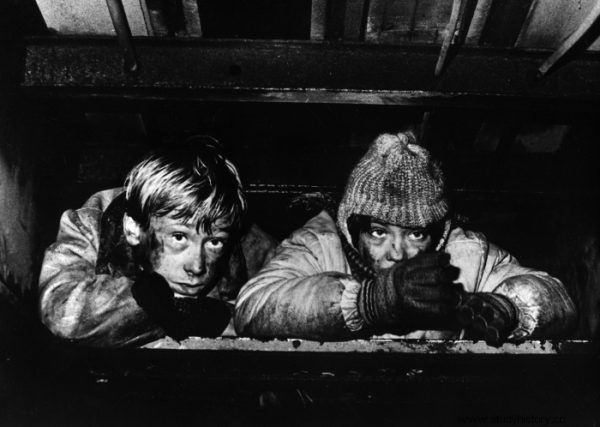
The story of the Zieliński brothers inspired Maciej Dejczer to make the film "300 miles to heaven". In the picture above, a frame from this production.
The boys ran without a plan. At first, they reached the Warsaw Okęcie. Seeing the well-guarded airport, they decided to move on, all the way to Świnoujście. During the tour, they showed great ingenuity. Anyway, unconventional thinking is a desirable trait in every potential refugee.
The brothers decided to travel ... on the axle under the truck. In order not to be detected by the sniffing dogs of the Wopists, i.e. the Border Protection Forces, they smeared themselves with grease. They stayed in this unusual hideout for 26 hours! They only got out from under the car when it was in a parking lot in Sweden. After many months of diplomatic friction, the local authorities decided to take in the underage refugees. And in Poland, the story of the young Zielińskis served as a plot for the 1989 film "300 miles to heaven".
6. Become an athlete. Or an artist
Some professions made it easier to escape west. The privileged groups who were occasionally let out abroad had more opportunities for illegal immigration than others. In the times of the Polish People's Republic, they were mainly sportsmen and artists.
During the foreign trip, the task of the fugitive was to distract the vigilance of special guardians (see:seconded security officers). They watched closely the members of the delegation. What their "care" looked like, we learn from the memories of Mira Zimińska-Sygietyńska:
Our "guardians" first got off the buses, among the people gathered they formed a line in front of the entrance, then young people got off the buses and walked between the line to the theater. After the performance - again the line of the "caretakers", the passage between the line to the buses and the return (...).
Despite constant control, escapes were common. For example, Tadeusz Teodorowicz, an outstanding speedway rider from Wrocław, managed to break away from the group. During the team's trip to the Netherlands, he took advantage of the delegates' moment of inattention during a screening.
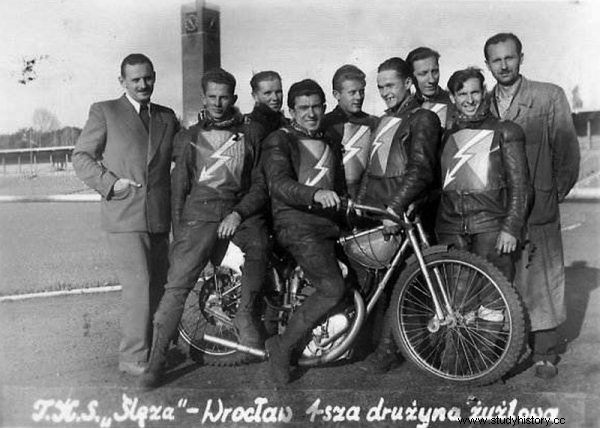
Ślęza Wrocław team - Tadeusz Teodorowicz, second from the left. Photo and caption from the book "To get away at any cost. Famous refugees and emigrants from the Polish People's Republic ”(Bellona 2017).
His story in the book "Get away at all costs. Famous refugees and emigrants from the People's Republic of Poland ”describes Jarosław Molenda:
The movie lasted 161 minutes, so Teodorowicz had plenty of time to leave the cinema. Nobody paid the slightest attention to him. It was in the cinema that the speedway driver saw his club mates for the last time. After leaving the cinema, he went to the nearest police station and asked for asylum.
7. Keep your eyes peeled… and take chances
The fantasy of the escapees knew no bounds. People dissatisfied with life under communist rule tried all possible methods to change the unbearable environment for the better. The risks they take are the best proof of how hard, burdensome and humiliating life in People's Poland must have seemed to them.

Another athlete who chose to escape the West was our Olympic gold medalist in pole vault Władysław Kozakiewicz. Picture from the book “To Escape at All Costs. Famous refugees and emigrants from the Polish People's Republic ”(Bellona 2017).
An ingenious recipe for crossing the border was found in the 1960s and 1970s by the inhabitants of Bytom-Bobrek and its vicinity. They were hiding in wagons with carbide barrels, exported by the Bytom branch of Zakłady Azotowe im. Paweł Finder in Chorzów to Western Europe - tells Molenda.
As you can see, sometimes it takes only proper observation of the world to escape. And understanding - what, where and when is transported to the West. To get to the dream Eden, you first of all have to keep your eyes and ears wide open.
Bibliography:
- Jaroslaw Molenda, Run away at any cost. Famous refugees and emigrants from the People's Republic of Poland , Bellona 2017.
- Dariusz Stola, A country with no exit? Migrations from Poland 1949-1989 , IPN 2010.
- Sebastian Pilarski, "He refused to return to the country":footballers from the Polish People's Republic escaped to the West , "Remembrance and Justice" No. 2 (24) / 2014.
- Mira Zimińska-Sygietyńska, The second love of my life , Publishers of Art and Film 1990.
- Franciszek Jarecki - daring escape from the PRL , interview with Franciszek Jarecki, PolskieRadio.pl 5/03/2015.
- "300 miles to heaven" - as Krzysztof Zieliński really tells, "The Hour of Truth" broadcast, Trójka, PolskieRadio.pl 02.22.2013.
